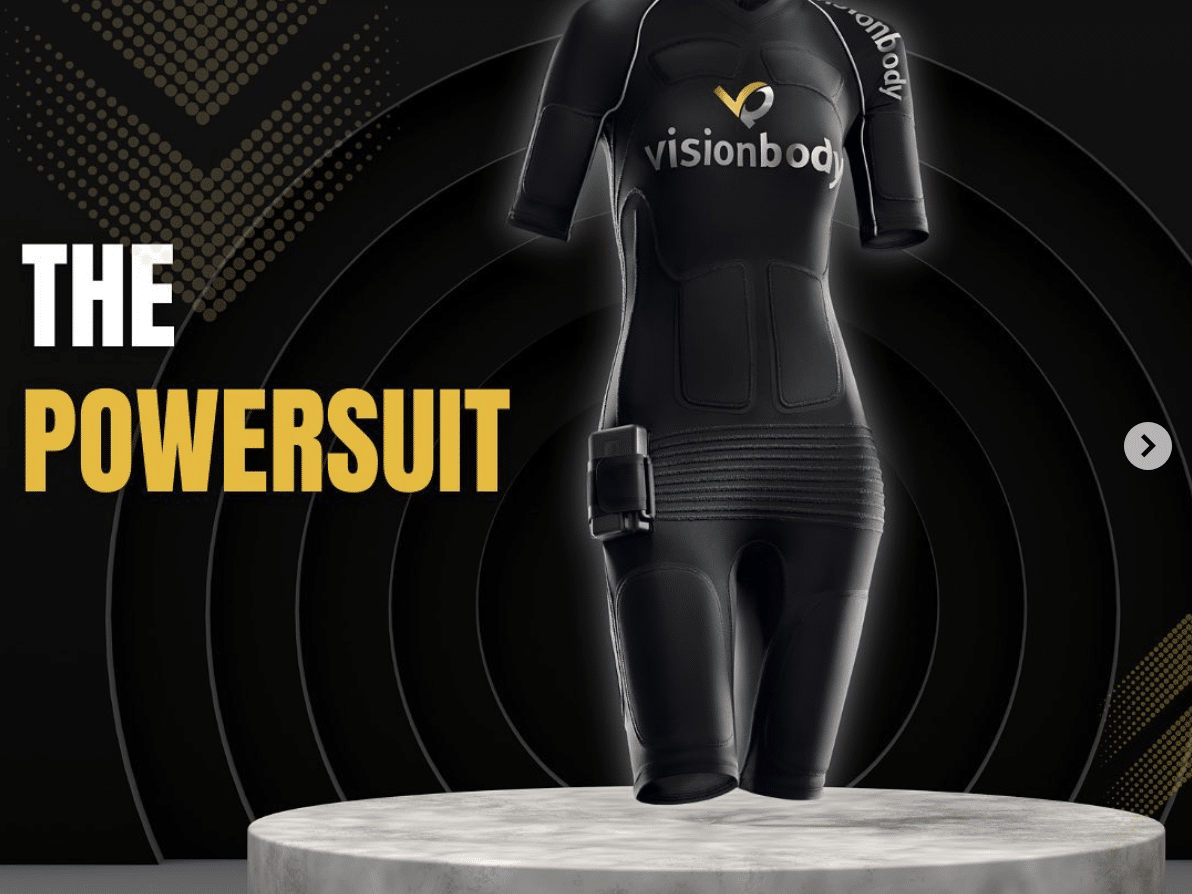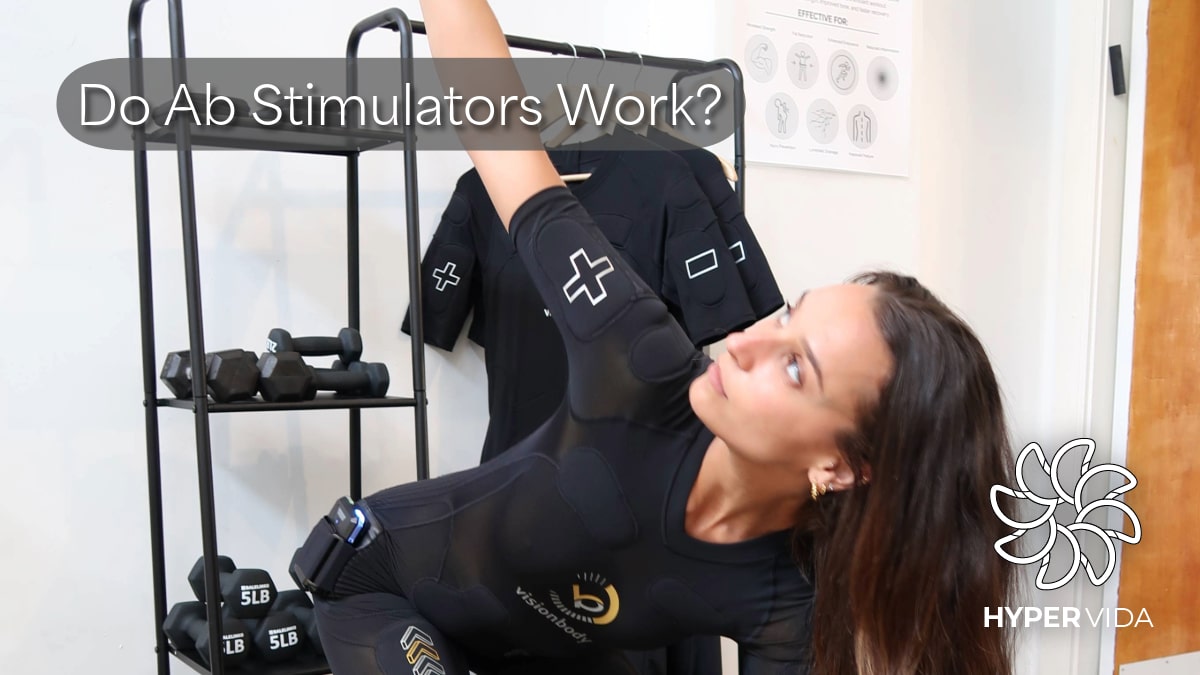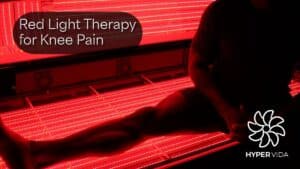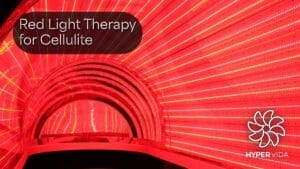The Appeal of a Shortcut to Defined Abs
In today’s fast-paced world, efficiency often takes precedence, especially when it comes to fitness. Among the wide array of health and wellness devices available, ab stimulators have captured attention by offering a seemingly effortless solution: the ability to strengthen and tone the abdominal muscles through Electrical Muscle Stimulation (EMS), all without the need for traditional exercise.
This concept is appealing to anyone aiming to reduce abdominal fat or achieve visible muscle definition. The underlying question is: Do ab stimulators actually work for fat loss? Can a device that passively contracts your muscles through electrical impulses truly lead to measurable changes in body composition? And if not, how does this technology actually work and how can we use it?
This article aims to explore that question in depth. We will examine the effectiveness of ab stimulators in reducing fat, with a focus on understanding the science behind EMS technology. In doing so, we will draw a clear distinction between standard, consumer-grade ab stimulators and more advanced EMS systems such as the Visionbody Powersuit and the Power Plate Pro7. These premium products offer broader muscular engagement and may provide indirect metabolic benefits, distinguishing them from typical ab belts.
By the end of this article, you will have a good understanding of what ab stimulators can realistically achieve and how they might fit into a larger fitness or wellness strategy.
Understanding Ab Stimulators
What Are Ab Stimulators?
Ab stimulators are devices designed to enhance muscle tone and strength in the abdominal region through the application of electrical impulses. These devices typically consist of a control unit connected to adhesive pads or belts that are placed on the skin over the abdominal muscles. When activated, the device sends electrical signals that stimulate the muscles to contract, mimicking the natural process of muscle engagement during exercise.
How Do They Work?
The technology behind ab stimulators is known as Electrical Muscle Stimulation (EMS). EMS operates by delivering low-level electrical currents to the muscles, causing them to contract involuntarily. This process is similar to the way muscles contract during voluntary movements but is induced externally. The repeated contractions can lead to increased muscle strength and endurance over time.
It’s important to distinguish EMS from Transcutaneous Electrical Nerve Stimulation (TENS). While both use electrical currents, TENS is primarily used for pain relief by targeting nerves, whereas EMS is intended for muscle activation and strengthening.
Types of Ab Stimulators
Ab stimulators come in various forms, each designed to cater to different user preferences and needs:
Standard EMS Ab Stimulators
- Abdominal Belts: These are wearable devices that wrap around the waist, containing multiple electrodes to target the abdominal muscles. They are user-friendly and often come with adjustable intensity settings.
- Adhesive Pad Systems: These consist of individual pads that can be placed directly on specific areas of the abdomen. They offer flexibility in targeting particular muscle groups and are often used for more focused stimulation.
Advanced EMS Ab Stimulators
- Integrated EMS Suits: Advanced systems like the Visionbody EMS Powersuit incorporate EMS technology into full-body suits, allowing for simultaneous stimulation of multiple muscle groups, including the abdomen. These are typically used in professional or clinical settings.
- Vibration Platforms: Devices such as the Power Plate Pro7 use whole-body vibration to stimulate muscle contractions. While not traditional EMS devices, they can indirectly engage abdominal muscles through reflexive responses to the vibrations.
To get a better idea of how this technology works, we’ll start by delving deeper into the science and general uses for EMS broadly, then get into the specific benefits of the more advanced stimulators.
The Science Behind Ab Stimulators
Physiological Basis: How EMS Induces Muscle Contractions
Electrical Muscle Stimulation (EMS) operates by delivering electrical impulses through electrodes placed on the skin, targeting specific muscle groups. These impulses mimic the action potentials generated by the central nervous system, leading to involuntary muscle contractions. This mechanism allows for the activation of muscle fibers without conscious effort, engaging both slow-twitch and fast-twitch fibers depending on the stimulation parameters.
EMS can be applied during functional movements or in static positions, offering versatility in its application. The intensity, frequency, and duration of the electrical impulses can be adjusted to achieve desired outcomes, such as muscle strengthening or endurance training.
Historical Use: EMS in Physical Therapy and Rehabilitation
Electrical Muscle Stimulation (EMS) has been an integral component of physical therapy and rehabilitation for several decades. Its applications have evolved over time, encompassing various therapeutic objectives aimed at restoring and enhancing neuromuscular function.
Prevention of Muscle Atrophy in Immobilized Patients
One of the primary uses of EMS in rehabilitation is to prevent muscle atrophy in patients who are immobilized due to injury, surgery, or prolonged bed rest. Muscle atrophy, characterized by the wasting or loss of muscle tissue, can occur rapidly when muscles are not actively engaged. EMS helps mitigate this by inducing involuntary muscle contractions, thereby maintaining muscle mass and strength during periods of inactivity. This application is particularly beneficial in orthopedic cases, such as after fractures or joint surgeries, where movement is restricted.
Facilitation of Muscle Re-education Following Neurological Injuries
EMS plays a crucial role in neuromuscular re-education, especially for patients recovering from neurological injuries like strokes or spinal cord injuries. In such cases, the communication between the brain and muscles is disrupted, leading to impaired voluntary muscle control. By delivering electrical impulses to specific muscle groups, EMS can help retrain the muscles to respond appropriately, thereby restoring functional movement patterns. This technique is often integrated into comprehensive rehabilitation programs to enhance motor recovery.
Enhancement of Circulation and Reduction of Edema
EMS has been utilized to improve blood circulation and reduce edema (swelling) in affected limbs. The rhythmic contractions induced by EMS facilitate venous return and lymphatic drainage, promoting the removal of excess fluids and metabolic waste products. This is particularly beneficial in post-operative care, where swelling can impede healing and mobility.
Post-Surgical Recovery and Muscle Strengthening
In the context of post-surgical rehabilitation, EMS has been employed to accelerate recovery and restore muscle strength. For instance, after anterior cruciate ligament (ACL) reconstruction, patients often experience significant quadriceps weakness due to disuse and surgical trauma. Incorporating EMS into the rehabilitation protocol can aid in early muscle activation, prevent atrophy, and enhance strength gains. EMS, when combined with traditional physical therapy exercises, can lead to improved functional outcomes and a faster return to activity.
Integration into Athletic Training Programs
Beyond clinical settings, EMS has found applications in athletic training to supplement voluntary exercise. Athletes use EMS to target specific muscle groups, enhance muscle performance, and expedite recovery. By providing an additional stimulus to muscles, EMS can help improve strength, endurance, and neuromuscular coordination. Moreover, its use in recovery protocols can aid in reducing muscle soreness and facilitating quicker return to training sessions.
Scientific Studies: Review of Research on EMS Effectiveness for Muscle Strength and Endurance
Numerous studies have investigated the efficacy of EMS in improving muscle strength and endurance. Research indicates that EMS can lead to significant gains in muscle strength, particularly when combined with voluntary exercise. For instance, a study published in the Journal of Applied Physiology found that EMS training improved muscle strength and endurance in healthy individuals.
Furthermore, whole-body EMS (WB-EMS) has been explored for its potential benefits in body composition and metabolic health. A study in Frontiers in Physiology reported that WB-EMS training led to improvements in lean body mass and reductions in body fat percentage among participants.
However, it’s important to note that while EMS can be a valuable tool for muscle conditioning, its effectiveness in fat loss is limited when used in isolation. The most significant benefits are observed when EMS is integrated into a comprehensive fitness program that includes proper nutrition and regular physical activity.
Benefits of EMS for Muscle Toning and Core Strength
Muscle Toning
Electrical Muscle Stimulation (EMS) has been recognized for its ability to enhance muscle tone by inducing involuntary muscle contractions through electrical impulses. These contractions can engage a higher percentage of muscle fibers compared to voluntary exercises, potentially leading to improved muscle firmness and definition.
A study published in the Journal of Strength and Conditioning Research found that participants who incorporated EMS into their training regimen experienced significant increases in muscle strength and endurance over a six-week period. The study concluded that EMS could be an effective supplementary tool for muscle conditioning, especially when combined with traditional resistance training.
It’s important to note that while EMS can aid in muscle toning, it should not be viewed as a replacement for comprehensive exercise programs. Instead, EMS serves best as an adjunct to regular physical activity, contributing to overall muscle health and appearance.
Core Strength and Posture
Beyond aesthetic improvements, EMS has shown promise in enhancing core strength and improving posture. The core muscles, including the transverse abdominis, multifidus, and pelvic floor muscles, play a crucial role in stabilizing the spine and maintaining proper posture.
Research indicates that EMS can effectively target these deep core muscles, which are often difficult to engage through conventional exercises. By stimulating these muscles, EMS may contribute to better spinal alignment and reduced back pain.
A study conducted by the University of Physical Education in Hungary observed that participants who underwent EMS training exhibited significant improvements in postural control and balance. The findings suggest that EMS can be a valuable tool in rehabilitation settings and for individuals seeking to enhance their postural stability.
Incorporating EMS into a fitness routine may offer benefits for individuals with sedentary lifestyles, as well as athletes aiming to optimize their core strength and posture. However, it’s essential to use EMS under professional guidance to ensure safety and effectiveness.
Do Standard Ab Stimulators Burn Fat?
Ab stimulators, utilizing Electrical Muscle Stimulation (EMS), are designed to contract abdominal muscles through electrical impulses. While they can enhance muscle tone and strength, their effectiveness in burning fat is limited.
EMS devices primarily target muscle fibers, leading to improved muscle endurance and strength. However, they do not significantly elevate heart rate or oxygen consumption, which are critical factors in substantial calorie burning and fat loss.
Therefore, while ab stimulators can be beneficial for muscle conditioning, they should not be relied upon as a primary method for fat reduction.
Can They Help Reveal Abs?
Achieving visible abdominal muscles, commonly referred to as a “six-pack,” requires a combination of muscle development and low body fat percentage. While ab stimulators can aid in strengthening and toning the abdominal muscles, they do not directly contribute to fat loss.
Reducing overall body fat through a combination of cardiovascular exercise, strength training, and a balanced diet is essential for revealing abdominal muscles. Relying solely on ab stimulators without addressing body fat levels will not result in visible abs.
Are There Any Indirect Fat Loss Benefits?
While ab stimulators are not effective for direct fat loss, they may offer some indirect benefits:
- Enhanced Muscle Tone: Regular use can improve muscle tone, which may slightly increase resting metabolic rate, leading to marginally higher calorie expenditure over time .
- Improved Posture and Core Stability: Strengthening core muscles can lead to better posture and stability, potentially enhancing performance in other physical activities that contribute to fat loss.
- Motivational Boost: Seeing improvements in muscle tone may motivate individuals to engage in more comprehensive fitness routines, including activities that promote fat loss.
However, it’s important to note that these indirect benefits are minimal and should complement, not replace, traditional fat loss strategies involving diet and exercise.
Regulatory Considerations
In the United States, the Food and Drug Administration (FDA) regulates EMS devices. Devices intended for muscle toning and strengthening must receive FDA clearance, ensuring they meet safety and efficacy standards. It’s crucial for consumers to verify that any ab stimulator they consider purchasing is FDA-cleared to ensure compliance with regulatory guidelines.
Integrating Ab Stimulators into a Fitness Regimen
Complementary Use: How to Incorporate EMS with Regular Exercise
Ab stimulators, utilizing Electrical Muscle Stimulation (EMS), can serve as a valuable adjunct to traditional exercise routines. While they are not a replacement for conventional workouts, when used appropriately, they can enhance muscle engagement and contribute to overall fitness goals.
Incorporation Strategies:
- During Workouts: Integrate EMS sessions during low-intensity exercises, such as planks or bodyweight squats, to amplify muscle activation. This combination can lead to improved muscle endurance and strength over time.
- Post-Workout Recovery: Utilize EMS devices after intense training sessions to aid in muscle recovery. The gentle contractions can help increase blood flow, potentially reducing muscle soreness.
- On Rest Days: Employ EMS on rest days to maintain muscle stimulation without the strain of a full workout, assisting in muscle maintenance and preventing atrophy.
It’s essential to follow the manufacturer’s guidelines regarding session duration and intensity to ensure safety and effectiveness.
Who Might Benefit Most from Ab Stimulators?
While ab stimulators can be beneficial for a broad audience, certain groups may find them particularly advantageous:
- Individuals with Limited Mobility: For those unable to perform traditional exercises due to injury or physical limitations, EMS can provide a means to engage muscles and prevent atrophy.
- Busy Professionals: People with tight schedules may find EMS devices convenient for maintaining muscle tone during short breaks or while performing other tasks.
- Athletes Seeking Enhanced Muscle Activation: Athletes aiming to target specific muscle groups more intensely can use EMS to supplement their training, potentially improving muscle strength and endurance.
- Rehabilitation Patients: Individuals recovering from surgery or injury may use EMS under professional supervision to facilitate muscle re-education and recovery.
Best Practices: Maximizing Results with Ab Stimulators
1. Consistency: Establishing a Regular Routine
Achieving noticeable results with ab stimulators hinges on consistent usage. Regular sessions ensure that muscles are continually engaged, promoting strength and endurance over time.
- Recommended Frequency: Aim for sessions 3 to 5 times per week, allowing rest days for muscle recovery.
- Session Duration: Begin with 15-20 minute sessions, gradually increasing as your comfort and endurance improve.
- Routine Integration: Incorporate sessions into your daily schedule, perhaps during relaxation periods or while performing light activities, to maintain consistency.
2. Proper Electrode Placement: Targeting the Right Muscles
Correct electrode placement is crucial for effective muscle stimulation and to prevent discomfort.
- Abdominal Placement: Position electrodes symmetrically on either side of the abdomen, aligning with the natural contours of the abdominal muscles.
- Avoid Bony Areas: Place electrodes on fleshy areas to ensure comfort and effective stimulation.
- Skin Preparation: Clean the skin with mild soap and water, and dry thoroughly before application to enhance conductivity and adhesion.
- Adherence to Guidelines: Refer to the manufacturer’s instructions or consult with a healthcare professional for specific placement strategies tailored to your device.
3. Gradual Intensity Increase: Building Tolerance Safely
Starting with a lower intensity setting allows your body to acclimate to the sensations of EMS, reducing the risk of discomfort or muscle fatigue.
- Initial Settings: Begin at the lowest intensity level, focusing on achieving a gentle muscle contraction without pain.
- Progressive Adjustment: As your muscles adapt, incrementally increase the intensity to maintain effectiveness and challenge your muscles appropriately.
- Monitoring Response: Pay attention to how your muscles respond during and after sessions, adjusting intensity as needed to avoid overexertion.
4. Combining EMS with a Healthy Lifestyle: Enhancing Overall Fitness
While ab stimulators can aid in muscle toning, they are most effective when integrated into a holistic fitness regimen.
- Balanced Diet: Maintain a nutritious diet rich in proteins, healthy fats, and complex carbohydrates to support muscle growth and recovery.
- Regular Exercise: Incorporate cardiovascular and strength-training exercises to promote fat loss and overall fitness.
- Hydration: Stay adequately hydrated to facilitate optimal muscle function and recovery.
- Rest and Recovery: Ensure sufficient rest between sessions to allow muscles to recover and prevent overtraining.
5. Consulting Professionals: Personalized Guidance for Optimal Use
Before beginning any EMS regimen, especially if you have underlying health conditions, it’s advisable to consult with healthcare professionals.
- Medical Consultation: Discuss with your doctor, particularly if you have conditions like heart disease, epilepsy, or are pregnant, to ensure EMS is safe for you.
- Professional Training Advice: Seek guidance from certified fitness trainers or physical therapists to tailor EMS usage to your specific fitness goals and needs.
- Device-Specific Instructions: Follow the manufacturer’s guidelines for your specific ab stimulator model to ensure safe and effective use.
By adhering to these best practices, users can maximize the benefits of ab stimulators, promoting muscle toning and contributing to overall fitness when combined with a healthy lifestyle.
Comparing Standard Ab Stimulators and Our Premium Tools

Standard Ab Stimulators: Limitations and Basic Functionality
Traditional ab stimulators are typically belt-like devices equipped with adhesive pads that deliver electrical impulses to the abdominal muscles. Their primary function is to induce muscle contractions, aiming to enhance muscle tone and strength. However, these devices have several limitations:
- Targeted Stimulation: They focus solely on the abdominal region, neglecting other muscle groups essential for overall core strength and stability.
- Limited Intensity Control: Standard ab stimulators often offer minimal customization in terms of intensity levels and pulse patterns, reducing their effectiveness for varied fitness goals.
- Lack of Comprehensive Benefits: While they may aid in muscle toning, they do not contribute significantly to fat loss or cardiovascular health.
- FDA Approval: Many of these devices lack FDA clearance, raising concerns about their safety and efficacy.
Advanced EMS Devices: Visionbody EMS Powersuit and Power Plate Pro7
In contrast, advanced EMS devices like the Visionbody EMS Powersuit and the Power Plate Pro7 offer a holistic approach to fitness, integrating technology to provide full-body benefits.
Visionbody EMS Powersuit
The Visionbody EMS Powersuit is a state-of-the-art wearable that delivers electrical impulses to multiple muscle groups simultaneously. Key features include:
- Full-Body Muscle Activation: With 24 integrated EMS pulse areas, the suit stimulates up to 98% of muscle fibers, ensuring comprehensive muscle engagement.
- Wireless and Hygienic Design: Unlike traditional EMS gear, the Visionbody suit is wireless, eliminating the need for wet electrodes. Its antibacterial, washable fabric ensures hygiene and comfort.
- Customizable Training: Controlled via a user-friendly app, users can tailor their workouts, adjusting intensity levels and targeting specific muscle groups.
- FDA Cleared: The Visionbody EMS Powersuit has received FDA clearance, affirming its safety and effectiveness for muscle stimulation.
- Time-Efficient Workouts: A 20-minute session with the suit can equate to a 4-hour traditional workout, making it ideal for individuals with tight schedules.
Power Plate Pro7
The Power Plate Pro7 is a whole-body vibration platform designed to enhance physical performance and recovery. Its notable features include:
- PrecisionWave™ Technology: This patented technology delivers consistent harmonic vibrations, stimulating muscles and improving circulation.
- Integrated Touchscreen: The Pro7 comes with an LCD touchscreen featuring Functional Interactive Training (F.I.T.) software, guiding users through various exercises.
- Versatile Training Options: With embedded proMOTION™ multidirectional cables and variable resistance, users can perform a wide range of exercises targeting different muscle groups.
- Scientifically Proven Benefits: Studies have shown that the Power Plate can increase bone density, improve balance, and enhance muscle strength.
- Commercial Grade: Designed for both home and professional use, the Pro7 supports a maximum load of 410 lbs, accommodating various users.
Comparative Analysis:
| Feature | Standard Ab Stimulators | Visionbody EMS Powersuit | Power Plate Pro7 |
| Muscle Activation | Abdominals only | Full-body (98% fibers) | Full-body via vibration |
| Customization | Limited | High (app-controlled) | High (touchscreen interface) |
| Portability | High | High | Moderate |
| FDA Clearance | Varies | Yes | Yes |
| Workout Duration | 20-30 minutes | 20 minutes (equiv. to 4 hours) | 30-60 seconds per exercise |
| Additional Benefits | Minimal | Improved circulation, reduced cellulite | Enhanced bone density, balance improvement |
While standard ab stimulators may offer basic muscle toning benefits, advanced EMS devices like the Visionbody EMS Powersuit and the Power Plate Pro7 provide comprehensive fitness solutions. Their ability to engage multiple muscle groups, coupled with customizable training options and scientifically backed benefits, make them superior choices for individuals seeking efficient and effective workouts.
Final Thoughts
While standard ab stimulators are limited in their fat-burning capabilities, advanced EMS devices like the Visionbody EMS Powersuit and Power Plate Pro7 offer more holistic benefits that, when integrated into a comprehensive fitness and nutrition plan, may support fat loss.
That being said, it’s important to remember that this is only an aid to the process. Diet and exercise are still needed alongside this regiment for better results.
Enhance Your Wellness Plan with EMS at Hypervida
Looking to take your exercise routine to the next level? Hypervida’s advanced EMS devices help with muscle activation, recovery and improved circulation. Learn more and book your training appointment today!








